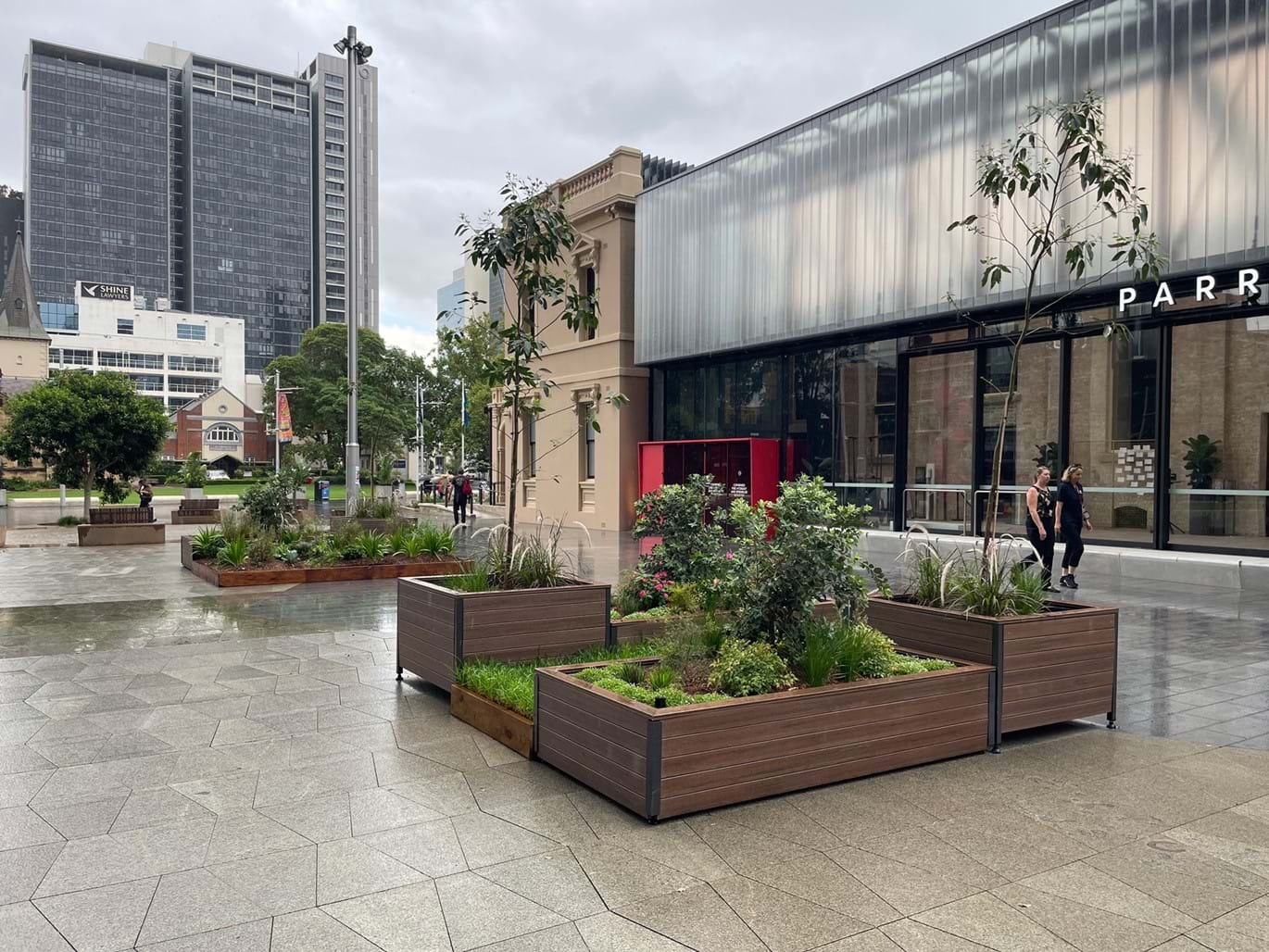MITIGATING URBAN HEAT ISLAND EFFECT
Scientific Study 2024
One of the great challenges for cities now and into the future is the rising temperature leading to the formation of the Urban Heat Island effect. The impact of this on our community includes;
- Higher temperatures reduce our ability to cool down predicted to result in 20% more heat related deaths 1
- To our bodies, more heat attacks, strokes, chronic disease complications 1
- Increase in electricity costs per household of $100 per month (2022) 1
- Predicted 3.4 trillion in losses by 2070, that is a 4% drop in NSW gross product and a 2% increase in unemployment 2.
Within Greater Sydney, The Western City District had 46% of residents exposed to high urban heat in 2019, at the end of the last drought period. The best solution to mitigate the Urban Heat Island (UHI) effect is to increase tree canopy3. Unfortunately there are many areas within the built environment that are unable to house trees due to underground services and structures, heritage, rooftops or cost of excavation. These areas often correspond to locations where communities congregate such as town centres, plazas or large thoroughfares.
in 2023 we were awarded a grant from the NSW Chief Scientist NSW Small Business Innovation & Research Program this study’s aim was to quantify the system’s ability to counteract UHI. Three sites, two located within Parramatta Square and one at Auburn Square were installed with portable gardens, consisting of garden trays, large planters and tree planters. Partnering with the University of Technology, Sydney a number of studies were conducted. This included;
- Temperature loggers were used to analyse the microclimate of the floating garden system and FLIR thermal imaging was employed to assess surface temperatures.
- Computational Fluid Dynamics (CFD) modelling was used to assess the potential of the installations for mitigating the UHI effect within an ideal street canyon, alongside its influence on wind flow patterns during hot summer conditions
- Building simulation modelling of the floating garden system as a green roof to examine the potential for the reduction of heating energy consumption in buildings.
Our free standing portable garden system was designed as a passive system to counteract UHI. The system is placed directly onto the hardscape and provides a growing medium for vegetation. It is modular and easily moved via pallet jack. The modules internals contain water reservoirs and wicking systems that drastically reduce maintenance requirements as well as provide superior plant health compared to normal planters. The wicking system also conserves water, reducing requirements for top down watering and captures rainwater. Wicking systems have been found to save up to 80% of water usage than a conventional irrigated bed4 and can potentially use recycled or storm water.
On days where ambient air temperature exceeded 35°C at the control sites, the ambient air temperature was 12–14°C less at the Future Garden sites.

Thermal imaging demonstrated surface temperature reductions up to 25◦C between test and control sites. Plant species were also analysed showing the benefits of high Leaf Area Index (LAI) and plantings worked best where there was ground cover, low plantings then overplanting with shrubs and bushes. Mulch, planting density and facading material selection also impacted the system’s capacity to cool. There was little difference between using a large / tree box or a garden tray, other than aesthetics and changes to wind patterns.
During the testing timeframe a sign placed on each site gave a QR code for community feedback. Whilst the sample size was small (n=9) there was an overall rating of 4.78 out of 5 in favour of the system. Verbal community feedback to council has also been positive with both Auburn City Council and Parramatta City council leaving the test sites in situ after the study finished. Another element that has attracted Parramatta City Council has been the moveability of the system. The last relocation, conducted on the 14 March of 100m, took 1 hour to move the two test sites to their new location.

test sites at Parramatta
1 Melville-Rea H. Verschuer R (2022) The Australia Institute. Climate and Energy.. Heatwatch: Extreme Heat in Western Sydney
2. Deloitte Access Economics (2020) A New Choice: Australia’s Climate for Growth https://www2.deloitte.com/au/en/pages/economics/articles/new-choice-climate-growth.html
3. Greater Sydney Commission (2019) Greater Sydney Region Plan. A Metropolis of Three Cities – connecting people
4 https://www.waterups.com.au/wp-content/uploads/2020/09/New-Info-Sheet-Water-Use-Trial-Results-17Sep20.pdf